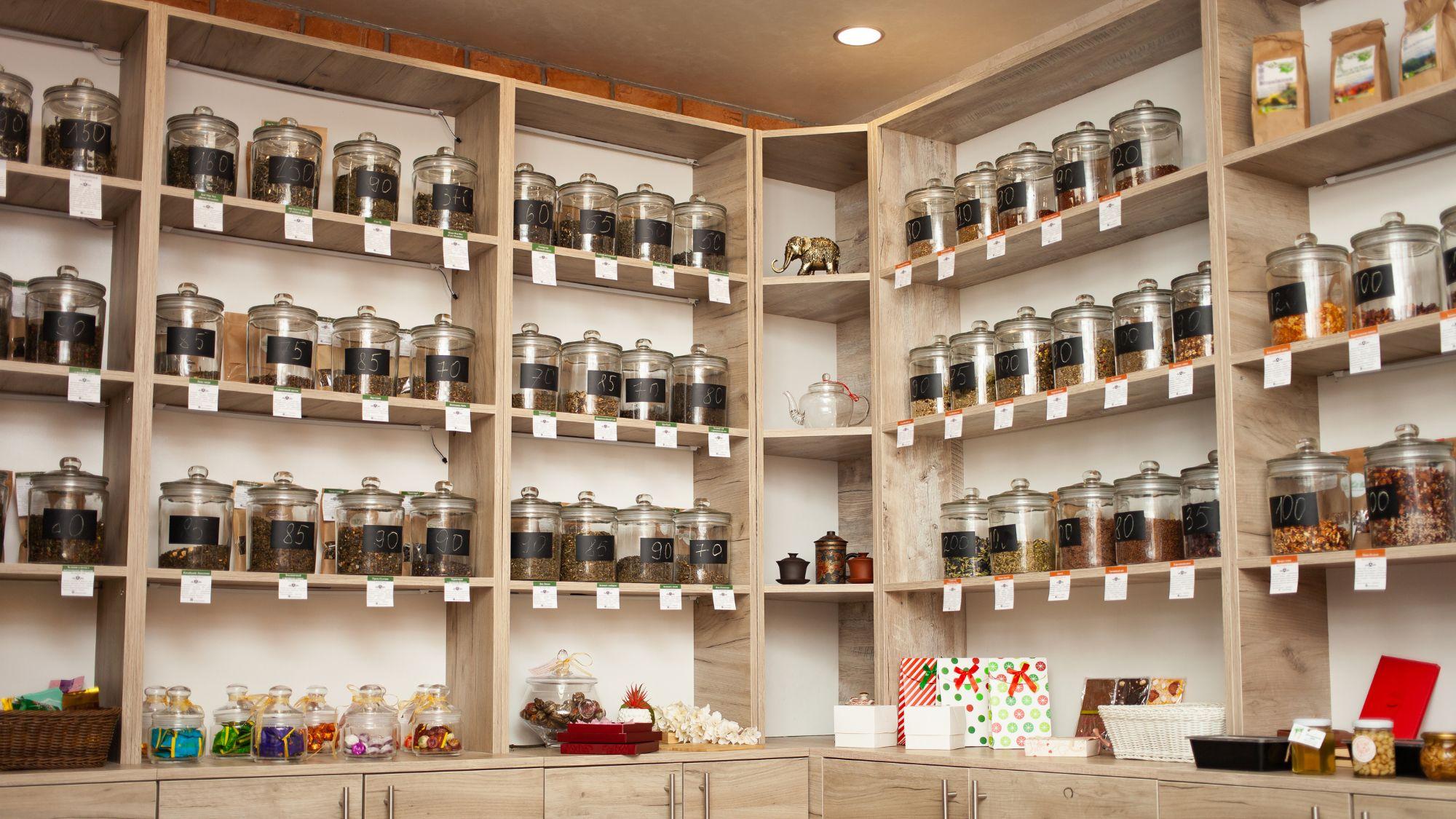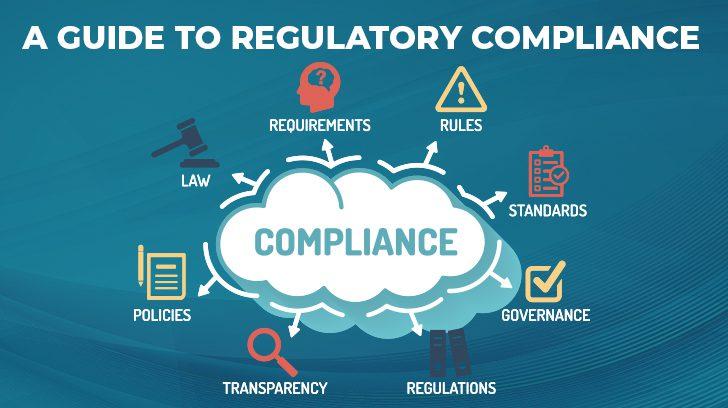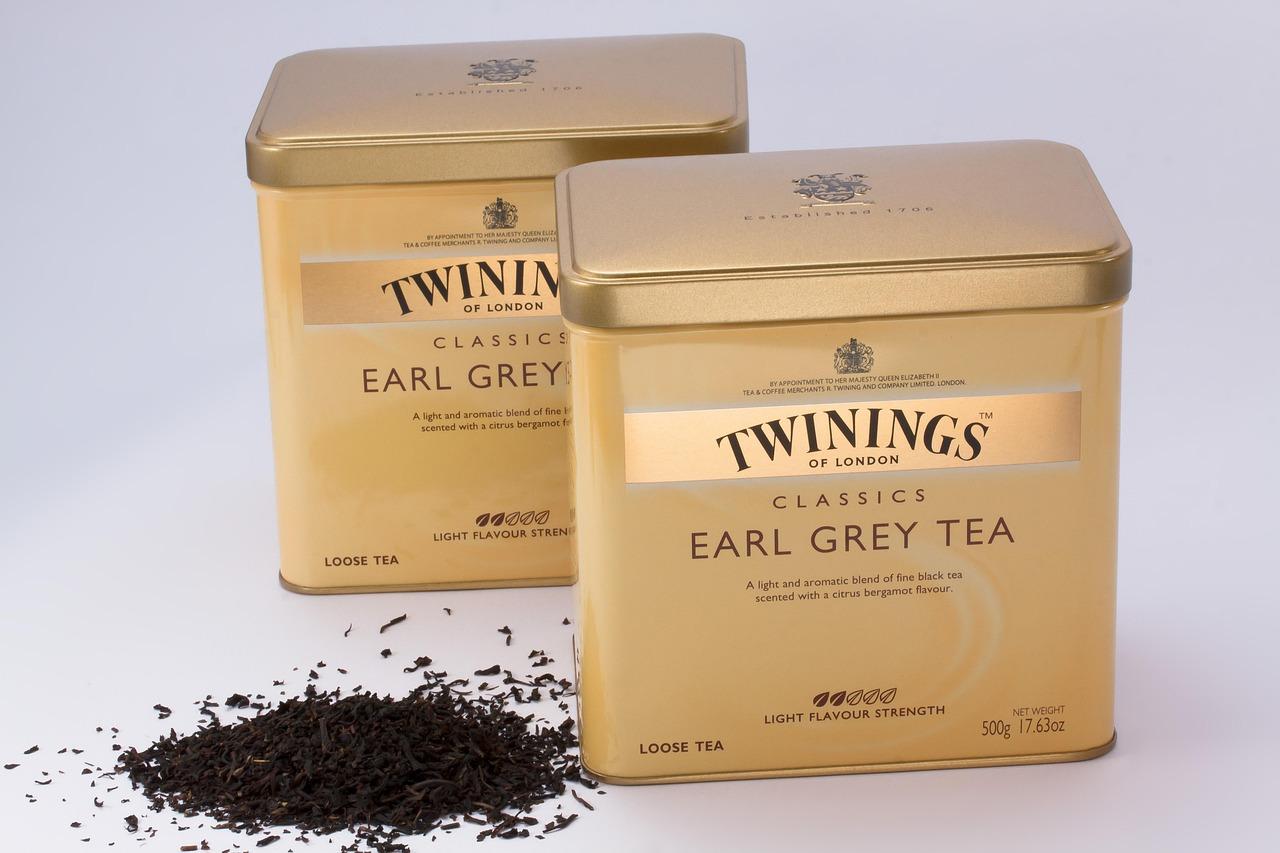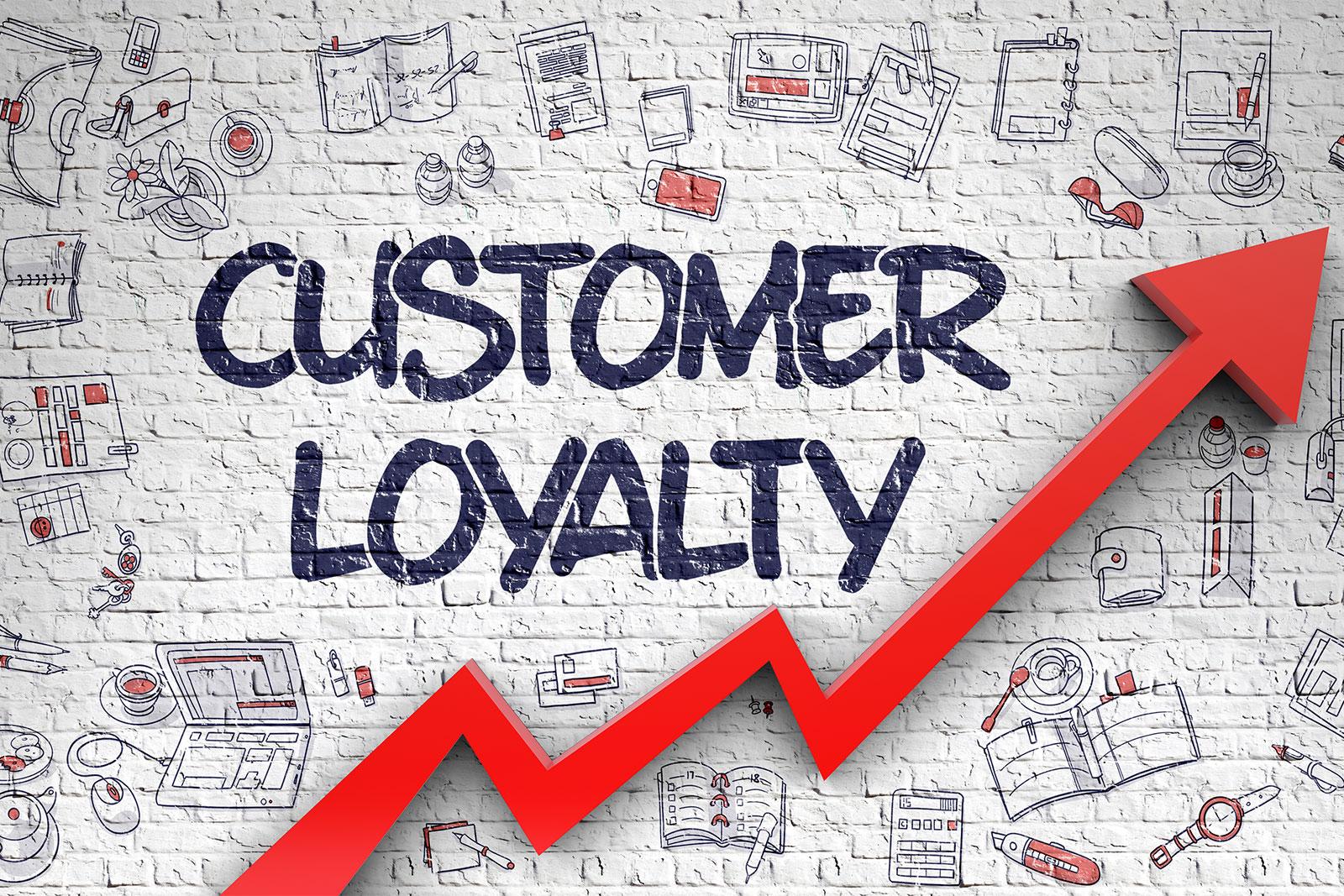
Are you a tea enthusiast dreaming of turning your passion into a thriving online business? You’re in the right place! The world of tea is not only rich in flavors but also brimming with opportunities for aspiring entrepreneurs. Whether you’re drawn to the calming properties of herbal blends or the robust taste of a classic black tea, starting your own tea business online can be both fulfilling and profitable. In this beginner’s guide, we’ll walk you through seven essential steps to transform your love for tea into a successful e-commerce venture. From selecting your unique blends to marketing your brand, we’ve got you covered. So, grab your favorite cup, sit back, and let’s dive into the delightful world of starting your own tea business!
Understanding the Tea Market and Finding Your Niche
When diving into the world of tea, it’s essential to grasp the complexities of the tea market. This industry is rich in tradition and variety, offering numerous opportunities for entrepreneurs looking to carve out their niche. Understanding consumer preferences is crucial, as the tea market is diverse and continually evolving.
First and foremost, consider the various types of tea available:
- Green Tea: Known for its health benefits and refreshing taste.
- Black Tea: A robust option that appeals to traditional tea drinkers.
- Herbal Tea: Caffeine-free and often enjoyed for its unique flavors.
- Specialty Teas: This includes artisanal blends, organic options, and rare varieties.
Identifying your target audience is equally important. Are you appealing to health-conscious consumers, tea connoisseurs, or perhaps those looking for a unique gift? Each demographic has its specific preferences and buying behaviors, making it essential to tailor your offerings accordingly.
Next, keep an eye on the trending tea products. Currently, some popular trends include:
- Matcha: The powdered green tea is not only a beverage but also a popular ingredient in recipes.
- Cold Brew Tea: This refreshing option is gaining traction, especially in warmer seasons.
- Functional Teas: Teas infused with adaptogens or superfoods are appealing to the wellness-focused market.
A survey of the competitive landscape will help you refine your niche. Study successful brands and analyze their offerings, marketing strategies, and customer engagement. Understanding what they do well—and where they may fall short—can give you valuable insights to shape your unique selling proposition.
Once you’ve established your niche, consider how you can differentiate your brand. Here are a few ideas:
- Quality Sourcing: Partner with local growers or sustainable farms to ensure premium products.
- Unique Packaging: Invest in eye-catching and environmentally friendly packaging to attract consumers.
- Personalization: Offer custom blends or subscription services tailored to individual preferences.
Lastly, don’t overlook the importance of online presence. An engaging website, active social media profiles, and informative content can significantly enhance your visibility in the crowded tea market. Utilizing SEO strategies and influencers within the tea community can also help to boost your brand’s recognition.
understanding the tea market and identifying your niche is crucial for success in this booming industry. By staying informed and adaptable, you can create a tea business that resonates with your target audience and stands out in a competitive landscape.

Crafting a Unique Brand Identity for Your Tea Business
Creating a captivating brand identity is crucial for your tea business, as it sets the tone for how customers perceive your products. A unique brand identity not only helps you stand out in a crowded market but also builds customer loyalty and trust. Here’s how to effectively craft that identity.
Start by defining your brand’s mission and values. What inspired you to start a tea business? Is it the health benefits of tea, the rich cultural history, or the art of tea blending? Articulating your mission will guide your branding decisions. Consider the core values that resonate with you and your target audience, such as sustainability, quality, or community engagement.
Next, develop a distinctive logo and color palette. Your logo will serve as the visual cornerstone of your brand identity. It should reflect the essence of your tea business. For example, if you focus on organic teas, earthy colors and natural elements in your logo could convey this message effectively. Choose a color palette that evokes the feelings and experiences you want your customers to associate with your tea products.
Once you have your visual elements, it’s time to create a consistent voice for your brand. This voice should permeate all your communications, from website content to social media posts. Whether you choose a friendly and approachable tone or a more sophisticated and elegant one, consistency is key. Here are a few aspects to consider:
- Language Style: Use simple language or industry jargon, depending on your audience.
- Storytelling: Share stories about your tea sources or the brewing process to engage customers.
- Humor vs. Seriousness: Decide how much personality you want your brand to have.
Don’t underestimate the power of packaging. Your tea packaging serves as a physical representation of your brand, so make it memorable. Use eco-friendly materials to align with sustainable values, or unique designs that catch the eye. Consider including information about the origin of the tea, brewing instructions, and even tasting notes on the packaging to enhance the customer experience.
Lastly, leverage social media and content marketing to communicate your brand identity. Platforms like Instagram and Pinterest are perfect for visually showcasing your products and brand story. Share behind-the-scenes content, customer testimonials, and educational posts about tea benefits to engage your audience. Consider creating a blog where you discuss various tea-related topics, which can further establish your expertise in the industry.
| Element | Importance |
|---|---|
| Mission Statement | Guides branding decisions |
| Logo & Color Palette | Visual representation of brand |
| Brand Voice | Consistent communication style |
| Packaging | First impression for customers |
| Social Media | Engagement and visibility |
By thoughtfully crafting each element of your brand identity, you will not only differentiate your tea business but also cultivate a loyal customer base that resonates with your vision. Remember, a strong brand identity is more than just aesthetics; it’s about connecting with your audience on a deeper level.

Sourcing Quality Tea: Where to Find the Best Suppliers
Sourcing quality tea is crucial for anyone looking to establish a successful online tea business. The right suppliers can offer not only exceptional products but also support and reliability. Here’s how to navigate the sea of options and find the best partners for your venture.
First, consider the regions renowned for their tea production. Places like:
- Darjeeling, India – Known for its delicate, aromatic teas.
- Uji, Japan – Famous for high-quality matcha and sencha.
- Yunnan, China – Celebrated for its rich and robust pu-erh teas.
- Ceylon, Sri Lanka – Offers a variety of vibrant black teas.
These regions not only provide exceptional tea but also have established networks of suppliers, making it easier for you to source quality products.
Next, leverage online platforms to discover suppliers. Websites such as:
- Alibaba – A marketplace for bulk purchasing.
- TeaSupplier.com – Specialized in connecting tea sellers.
- Global Sources – Provides verified suppliers from various regions.
These platforms often feature user reviews and ratings, which can help you gauge the reliability and quality of the suppliers.
Another effective strategy is to attend trade shows and tea expos. Events like:
- The World Tea Expo
- Specialty Tea Expo
These gatherings not only allow you to sample products but also to connect with producers directly, building relationships that can lead to better deals and exclusive products.
When evaluating potential suppliers, consider creating a simple table to compare their offerings:
| Supplier Name | Tea Types Offered | Min Order Quantity | Lead Time |
|---|---|---|---|
| TeaCo | Green, Black, Herbal | 10 kg | 2 weeks |
| Leaf & Brew | White, Oolong | 5 kg | 1 week |
| Pure Teas | Organic, Flavored | 15 kg | 3 weeks |
This table can help you quickly assess which suppliers meet your needs in terms of variety, order quantity, and delivery time. Don’t hesitate to reach out to multiple suppliers for samples before making a final decision. Tasting different teas can give you a better sense of what resonates with your target audience.
Lastly, consider forming a partnership with suppliers who align with your brand values. Whether it’s sustainability, organic sourcing, or fair trade practices, having a strong ethical foundation can not only attract customers but also enhance your brand’s reputation.
Building Your Online Storefront: Choosing the Right Platform
When diving into the world of e-commerce, the platform you choose for your online tea storefront can make or break your business. Selecting the right foundation isn’t just about aesthetics; it’s about functionality, ease of use, and scalability. Here are some key factors to consider when making your choice:
- User-Friendly Interface: Look for a platform that makes it easy to set up and manage your store without needing extensive technical knowledge. Platforms like Shopify and WooCommerce are known for their intuitive dashboards.
- Payment Options: Ensure your platform supports multiple payment gateways, such as PayPal, Stripe, and credit card processing. This flexibility can help you cater to a broader audience.
- Customization: Your tea business deserves a unique look! Choose a platform that allows for customization so you can create a brand identity that resonates with your customers.
- Mobile Responsiveness: With an increasing number of consumers shopping on their phones, ensure that your platform provides a seamless mobile experience.
- SEO Capabilities: A platform with strong SEO tools will help you improve your visibility on search engines, driving organic traffic to your site.
- Scalability: As your tea business grows, your platform should grow with you. Look for options that can handle increased traffic and sales without compromising performance.
Here’s a quick comparison of some popular e-commerce platforms suitable for your tea business:
| Platform | User-Friendly | Customization | Scalability | Cost |
|---|---|---|---|---|
| Shopify | ✔ | ✔ | ✔ | Starts at $29/month |
| WooCommerce | ✔ | ✔ | ✔ | Free (plus hosting costs) |
| BigCommerce | ✔ | ✔ | ✔ | Starts at $29.95/month |
| Squarespace | ✔ | Limited | Moderate | Starts at $18/month |
Once you’ve narrowed down your options based on these criteria, take advantage of free trials or demos. Experimenting with different platforms will help you find the one that feels right for your business. Consider your long-term vision as well; you want a platform that can adapt as your tea business grows and evolves.
don’t underestimate the importance of customer support. A responsive support team can save you time and frustration when issues arise. Look for platforms that offer comprehensive resources, including tutorials, forums, and live chat options.

Creating Irresistible Product Descriptions and Visuals
When it comes to selling tea online, your product descriptions and visuals are your first chance to make a lasting impression. Potential customers can’t smell or taste your tea through a screen, so it’s crucial to create descriptions that evoke the senses and visuals that captivate the eye. Here are some tips to ensure your tea offerings stand out in a crowded marketplace.
Craft Compelling Descriptions
Your product description should do more than just inform; it should entice. Here’s how:
- Highlight Unique Selling Points: What makes your tea special? Is it sourced from a unique region, made with organic ingredients, or blended for a specific health benefit? Make these points clear.
- Use Descriptive Language: Paint a picture with words. Describe the flavor profile, aroma, and the experience of drinking your tea. For instance, instead of saying “chamomile tea,” say “a soothing blend of floral chamomile that wraps you in a warm embrace, perfect for winding down.”
- Tell a Story: Share the journey of your tea—from how it’s harvested to the traditions surrounding its consumption. This connection can make your product more relatable and appealing.
Create Stunning Visuals
Imagery plays a crucial role in online retail. Here are some ways to enhance your visuals:
- High-Quality Photography: Invest in professional photography that captures the texture and color of your tea. Use natural light and simple backgrounds to keep the focus on the product.
- Incorporate Lifestyle Shots: Show your tea in action. Images of a steaming cup of tea paired with a cozy book or a serene outdoor setting can help customers envision themselves enjoying your product.
- Utilize Infographics: If you offer different blends or health benefits, consider creating an infographic. This can efficiently convey information while keeping it visually engaging.
Optimize for SEO
While you’re crafting beautiful descriptions and visuals, don’t forget about search engine optimization. Use relevant keywords in your product titles and descriptions to improve visibility. Think about what terms potential customers might be searching for and incorporate those naturally.
Sample Product Description Table
| Tea Type | Flavor Notes | Health Benefits |
|---|---|---|
| Green Tea | Fresh, Grassy, Slightly Sweet | Rich in antioxidants, boosts metabolism |
| Chamomile | Floral, Sweet, Soothing | Promotes relaxation, aids sleep |
| Earl Grey | Citrusy, Bergamot, Earthy | Improves digestion, enhances mood |
is not just about selling a product; it’s about sharing an experience. By engaging your customers’ senses and emotions, you can turn casual browsers into loyal tea enthusiasts. Remember, a well-crafted description and stunning visuals can be the difference between a click and a cart abandonment.

Developing a Marketing Strategy That Engages Your Audience
Creating a marketing strategy that resonates with your audience is essential for the success of your online tea business. Understanding who your customers are and what they want sets the foundation for all your marketing efforts. Start by identifying your target audience, considering factors like age, location, and lifestyle. This information will help you tailor your messaging and product offerings.
Next, dive into the art of storytelling. Customers love to connect with brands that share their values and beliefs. Share the story of your tea journey: why you started the business, your passion for tea, and what makes your blends special. Using platforms like Instagram and Facebook, showcase behind-the-scenes content that highlights your process, from sourcing ingredients to brewing techniques.
Another effective way to engage your audience is through interactive content. Consider incorporating:
- Quizzes: “What Type of Tea Are You?” can lead customers to your products.
- Polls: Ask followers about their favorite tea blends or flavor preferences.
- Live Q&A Sessions: Host events where potential customers can ask about brewing methods, health benefits, or pairing suggestions.
Email marketing is a powerful tool to maintain engagement with your audience. Build a mailing list by offering a discount for first-time buyers or exclusive access to new products. Regular newsletters can include:
- Tea tips and brewing guides
- Special promotions or seasonal offers
- Customer testimonials and reviews
Utilizing social proof can significantly enhance your credibility. Create a section on your website to showcase customer reviews or feature testimonials prominently on product pages. This builds trust and encourages new buyers to make a purchase. Consider incentivizing customers to leave reviews by offering loyalty points or entry into a giveaway.
Lastly, don’t overlook the power of collaboration. Partner with influencers or other brands that align with your values. This can help you reach new audiences and create engaging content together. A tea-tasting event or a co-branded product line can generate buzz and drive traffic to your site.
| Engagement Tactics | Description |
|---|---|
| Storytelling | Share your brand’s journey and values. |
| Interactive Content | Quizzes, polls, and live sessions to engage users. |
| Email Marketing | Regular newsletters with tips, promotions, and testimonials. |
| Social Proof | Showcase customer reviews and testimonials. |
| Collaboration | Partner with influencers and brands for co-promotion. |
By combining these strategies, you can create a dynamic and engaging marketing approach that not only attracts customers but also keeps them coming back for more. Tailoring your strategy to fit your audience’s interests will ensure you build a loyal community around your tea business.

Navigating Legal Requirements and Licensing for Your Business
When diving into the world of online tea sales, understanding the legal landscape is essential for ensuring that your business not only thrives but adheres to regulations and licensing requirements. Without proper knowledge, you risk running into legal troubles that could jeopardize your venture. Here’s a rundown of the key considerations you should have in mind.
First and foremost, research the necessary licenses that pertain to selling food products online. Depending on your location, you may need specific permits or licenses to operate legally. Common licenses include:
- Food Dealer’s Permit: Required in many states for selling food products.
- Sales Tax Permit: Essential for collecting sales tax on your products.
- Home Occupation Permit: May be needed if you’re running your business from home.
Another critical aspect is compliance with food safety regulations. The Food and Drug Administration (FDA) has guidelines that govern the packaging, labeling, and safety of food products. Ensure that your tea products meet these standards to avoid any future complications. Key components include:
- Proper labeling: Ingredients, allergens, and nutritional information must be clearly stated.
- Safe packaging: Use materials that protect the integrity and safety of your tea.
Additionally, if you’re planning to import tea from international suppliers, customs regulations come into play. Importing products can be a complex process, and you’ll need to understand tariffs, import duties, and the necessary documentation to get your products into the country legally. A good practice is to work with a customs broker who can guide you through these processes seamlessly.
It’s also wise to consult with a legal professional who specializes in small business law. They can help you navigate the intricacies of business structure—whether you should operate as a sole proprietorship, LLC, or corporation—and ensure that you are protected against potential liabilities. Each structure has its pros and cons, especially in terms of taxes and personal liability.
Here’s a quick comparison table to illustrate the differences between common business structures:
| Business Structure | Liability Protection | Taxation |
|---|---|---|
| Sole Proprietorship | No | Personal Income Tax |
| LLC | Yes | Pass-through Taxation |
| Corporation | Yes | Corporate Tax Rate |
Lastly, stay updated on local regulations, as they can vary significantly from one municipality to another. Join local business associations or chambers of commerce that provide resources and updates on legal requirements in your area. Networking with other entrepreneurs can also provide insights that help you navigate the complexities of starting your tea business.
By taking these steps and proactively addressing the legal aspects of your business, you’ll set a solid foundation for your online tea venture. Remember, being informed is key to running a successful and compliant business.

Establishing Reliable Shipping and Customer Service Processes
When you’re venturing into the world of online tea sales, is paramount. These elements can either make or break your business, influencing customer satisfaction and repeat purchases. Let’s dive into some essential strategies to set up robust systems that keep your customers happy and your tea business thriving.
First and foremost, choose a trusted shipping partner. Research various shipping providers to find the one that best suits your needs. Consider factors such as:
- Shipping speed
- Cost-effectiveness
- Delivery options
- Tracking capabilities
- Customer service reputation
Once you’ve selected a shipping partner, ensure you understand their policies and procedures. This knowledge will empower you to communicate effectively with your customers about shipping timelines and costs.
Next, invest in quality packaging. Your tea deserves to arrive at its destination in pristine condition. Use packaging materials that not only protect the products but also reflect your brand’s image. Options to consider include:
- Recyclable materials
- Custom-branded boxes or bags
- Eco-friendly fillers
Transitioning to customer service, it’s crucial to create a positive experience from the first interaction. Consider implementing a multi-channel support system to cater to different customer preferences. This might include:
- Email support
- Live chat on your website
- Social media messaging
- Phone support
Transparency is key. Make sure to keep your customers informed about their order status. Sending shipping confirmation emails, along with tracking information, can significantly enhance their experience. Here’s a simple table to help you outline your communication strategy:
| Communication Type | Timing | Channel |
|---|---|---|
| Order Confirmation | Immediately after purchase | |
| Shipping Notification | Once shipped | Email/SMS |
| Delivery Confirmation | Upon delivery | Email/SMS |
| Follow-up Survey | 1 week after delivery |
always welcome feedback. Encourage your customers to share their experiences and suggestions. Not only does this create a sense of community, but it also provides you with valuable insights to improve your shipping and customer service processes continuously. By actively engaging with your customers, you can build lasting relationships and foster loyalty.
establishing dependable shipping and customer service processes is an investment in your tea business’s sustainability. By carefully selecting your partners, enhancing your packaging, and maintaining clear communication, you can create a seamless experience that keeps customers coming back for more.

Leveraging Social Media to Boost Your Tea Brand
In today’s digital landscape, social media is a powerful tool for elevating your tea brand to new heights. With billions of users scrolling through their feeds daily, the opportunity to connect with potential customers is immense. Here’s how you can harness the power of these platforms to grow your tea business.
First and foremost, identify your target audience. Knowing who your ideal customers are will guide your content creation and engagement strategies. Are they young professionals seeking a morning boost, or are they wellness enthusiasts looking for herbal remedies? Tailoring your messaging to address their needs and preferences will foster stronger connections.
Next, it’s essential to choose the right platforms. Not all social media channels are created equal. Here’s a breakdown of popular platforms and their unique advantages:
| Platform | Best For | Content Type |
|---|---|---|
| Visual storytelling | Photos, Stories, Reels | |
| Community building | Posts, Events, Groups | |
| Real-time engagement | Short updates, Polls | |
| Inspiration and discovery | Images, Infographics |
Once you’ve selected the right platforms, it’s time to create compelling content. Your posts should be a mix of educational and entertaining material. Consider sharing:
- Tea preparation tips and brewing techniques
- Health benefits of different tea varieties
- Behind-the-scenes looks at your sourcing and production processes
- User-generated content showcasing customers enjoying your teas
Don’t forget to leverage user engagement. Encourage your followers to share their tea experiences by creating hashtags or running contests. This not only promotes interaction but also builds brand loyalty. Recognizing your customers’ contributions can make them feel valued and more likely to promote your brand organically.
Lastly, invest in ads and promotions. Social media platforms offer targeted advertising options that can help you reach a wider audience quickly. Experiment with different ad formats, such as carousel ads showcasing various tea blends or video ads demonstrating how to brew the perfect cup.
By effectively using social media, you can build a vibrant community around your tea brand, turning casual followers into loyal customers. Keep experimenting and adjusting your strategies based on engagement analytics to ensure you’re on the right track.
Choosing the Right Pricing Strategy for Maximum Profit
When launching your tea business online, selecting the right pricing strategy is essential to maximizing your profit margins. The price you set not only reflects the quality of your product but also plays a critical role in attracting your target market. Here are some effective strategies to help you determine the best pricing model for your tea products:
- Cost-Plus Pricing: This method involves calculating the total cost of producing your tea—including ingredients, packaging, and shipping—and then adding a markup percentage. This straightforward approach ensures that all costs are covered while still providing a profit margin.
- Value-Based Pricing: Assess the perceived value of your tea to customers. If your product offers unique benefits, such as premium blends or organic sourcing, you can set a higher price point. Understanding your audience’s willingness to pay can significantly boost your profits.
- Psychological Pricing: Utilizing pricing strategies that end in .99 or .95 can create a perception of getting a better deal. For example, pricing your tea at $9.99 instead of $10 can influence consumer behavior positively.
- Competitive Pricing: Research your competitors to understand their pricing structures. Setting your prices slightly lower can attract price-sensitive customers, while pricing higher can position you as a premium brand if justified by quality.
Consider implementing tiered pricing models to cater to different customer segments. This involves offering multiple products at varying price points, which can encourage purchases from both budget-conscious consumers and those looking for premium options. For instance, you might offer:
| Product | Price | Description |
|---|---|---|
| Basic Green Tea | $5.00 | A simple, refreshing blend perfect for everyday sipping. |
| Organic Chamomile | $10.00 | Soothing tea made from premium organic chamomile flowers. |
| Luxury Black Tea Set | $25.00 | Includes a selection of rare black teas in an elegant package. |
Don’t overlook promotional strategies. Offering discounts or bundled deals can entice customers to buy more. For instance, consider a “buy three, get one free” offer or seasonal discounts to boost sales during peak times. Such promotions can create a sense of urgency and encourage customers to make quicker purchasing decisions.
Lastly, continually evaluate and adjust your pricing strategy based on market trends and customer feedback. Utilize analytics tools to track sales and customer behavior, making data-driven decisions to refine your pricing over time. Remember, the right pricing strategy is not static; it evolves as your business grows and market dynamics change.

Building a Community Around Your Tea Brand
Creating a successful tea brand goes beyond just offering a quality product; it’s about forging connections and cultivating a community that resonates with your values and mission. By engaging with your audience, you can transform casual customers into loyal fans who feel personally invested in your brand.
Start by establishing a strong online presence. Utilize social media platforms like Instagram, Facebook, and TikTok to showcase your teas and share your brand story. Consider creating engaging content that highlights not only the benefits of your products but also the lifestyle associated with tea drinking. This could include:
- Behind-the-scenes looks at your sourcing and blending processes.
- User-generated content where customers share their tea moments.
- Educational posts about tea types, brewing techniques, and health benefits.
Another effective way to build community is through interactive experiences. Host virtual tea tastings or live Q&A sessions where customers can learn more about your brand and share their own experiences. This personal touch not only educates your audience but also fosters a sense of belonging. Encouraging participation can be as simple as asking your followers to share their favorite tea pairings or inviting them to suggest new flavors.
Don’t underestimate the power of email marketing. Create a newsletter that offers exclusive content, promotional offers, and community highlights. Personalize your emails to make your subscribers feel special and appreciated. You could feature a “tea lover of the month” or spotlight customer reviews, which fosters a sense of community among your followers.
Consider developing a rewards program that encourages interaction and loyalty. This could involve:
- Points for purchases that can be redeemed for discounts.
- Bonus points for engaging on social media or referring friends.
- Exclusive members-only products or early access to new releases.
Utilizing a feedback loop is crucial for continuous growth. Regularly seek out feedback from your community about their experiences with your brand. This can be done through surveys, polls, or simply encouraging comments on social media. Showing that you value their opinions not only enhances customer retention but also helps you refine your products and services.
Lastly, partner with influencers or other brands that share your values. Collaborations can introduce your tea brand to new audiences and strengthen community ties. Choose partners who genuinely resonate with your mission and have an engaged following, as authenticity is key in building a meaningful community.

Measuring Success: Key Metrics to Track Your Growth
As you embark on your journey to establish a successful online tea business, it’s vital to keep a close eye on specific metrics that will guide your growth and inform your strategy. Understanding what to measure can transform your business from a simple side project into a thriving enterprise.
Sales Revenue: This is the most straightforward metric, yet it’s fundamental. Track your daily, weekly, and monthly sales to understand your revenue trends. Look for patterns in seasonality and product performance, which can indicate what flavors or types of tea resonate most with your customers.
Customer Acquisition Cost (CAC): Knowing how much you spend to acquire each customer is crucial. Calculate CAC by dividing your total marketing expenses by the number of new customers acquired during a given period. Keeping this cost low while maintaining strong sales is essential for profitability.
Customer Lifetime Value (CLV): This metric helps you understand the total revenue you can expect from a customer over their relationship with your business. CLV can guide your marketing strategies and help you justify your CAC. To calculate CLV, consider the average purchase value, purchase frequency, and average customer lifespan.
Website Traffic and Conversion Rates: Monitor the number of visitors to your site and track how many of them make a purchase. Tools like Google Analytics can help you analyze traffic sources, user behavior, and conversion rates. Aim for a balance of high traffic and strong conversion rates, as both are critical for growth.
Social Media Engagement: In the digital age, your online presence is crucial. Measure likes, shares, comments, and overall engagement on your social media platforms. High engagement rates can lead to increased brand awareness and loyalty, which translates to sales.
| Metric | Importance | Tools for Tracking |
|---|---|---|
| Sales Revenue | Core measure of business success | Shopify, WooCommerce |
| Customer Acquisition Cost | Ensures profitability of marketing | Google Analytics, CRM tools |
| Customer Lifetime Value | Guides marketing investment | CRM tools, spreadsheets |
| Website Traffic | Indicates online visibility | Google Analytics |
| Social Media Engagement | Builds community and loyalty | Social media analytics tools |
Return on Investment (ROI): Measuring the effectiveness of your marketing campaigns is essential. Calculate ROI by comparing the profit generated from a campaign to the total amount spent on it. A positive ROI indicates that your marketing efforts are paying off and should be scaled.
By focusing on these key metrics, you can fine-tune your strategies, allocate resources effectively, and ultimately drive your tea business toward success. Start measuring today, and watch your growth unfold!

Adapting and Evolving Your Business for Long-Term Success
In today’s fast-paced digital world, being adaptable is key to the longevity of any business. For those venturing into the online tea market, flexibility can transform your initial concept into a thriving enterprise. Here are some essential strategies to evolve your tea business while keeping the essence of your brand intact:
- Understand Market Trends: Stay informed about the latest trends in the tea industry. From health benefits to flavor innovations, knowing what consumers are seeking can help you align your products with demand.
- Engage with Your Audience: Building a strong relationship with your customers is vital. Use social media platforms to interact, gather feedback, and create a community around your brand.
- Embrace Technology: Utilize e-commerce tools and analytics to streamline operations and make data-driven decisions. This could involve upgrading your website or using customer relationship management software.
To maintain a competitive edge, consider diversifying your product offerings. If you begin with traditional teas, think about branching into herbal blends, specialty tea accessories, or even tea subscription boxes. This not only attracts a wider audience but also encourages repeat purchases from existing customers who are eager to try new flavors or products.
| Product Type | Target Audience | Potential Benefits |
|---|---|---|
| Herbal Teas | Health-conscious consumers | Natural remedies, relaxation |
| Loose Leaf Teas | Tea enthusiasts | Premium experience, flavor variety |
| Tea Accessories | Gift shoppers | Complete tea experience, convenience |
Moreover, sustainability is becoming increasingly important to consumers. By sourcing your tea ethically and using eco-friendly packaging, you not only appeal to environmentally-conscious customers but also enhance your brand image. Highlight these efforts on your website to attract a loyal customer base that shares your values.
Lastly, be prepared to pivot when necessary. The online marketplace can be unpredictable, and changes in consumer behavior can happen overnight. Regularly assess your business model, marketing strategies, and customer feedback to stay ahead of the curve. This proactive approach will ensure that your tea business not only survives but thrives in the long run.

Celebrating Milestones: Encouraging Customer Loyalty and Feedback
Building a successful online tea business is not just about selling great products; it’s also about creating a community of loyal customers who feel valued and engaged. Celebrating milestones in your business journey is an excellent way to foster loyalty and gather valuable feedback from your audience. When you hit those important markers, whether it’s your first month in business or your 100th order, don’t let them pass unnoticed!
One effective way to celebrate milestones is by sharing your journey with your customers. Create a captivating story about how you started, the challenges you overcame, and the progress you’ve made. This transparency builds trust and invites your customers to be a part of your journey. Consider writing a blog post or creating a video that highlights these moments, showcasing not just your growth but also the role your customers played in it.
Additionally, consider offering exclusive rewards or discounts to your loyal customers during milestone celebrations. This could be as simple as a 10% discount or a special limited edition tea blend that they can only access during the celebration period. Here are some ideas for rewards:
- Exclusive discounts for returning customers.
- Free shipping on orders over a certain amount.
- Special bundles of your most popular teas.
- Early access to new products.
Incorporating customer feedback into your celebratory milestones is equally important. Use surveys or social media polls to gather opinions on what your customers love about your products and what they wish to see improved. By showing that you value their input, you make them feel more connected to your brand. Consider creating a simple feedback table on your website:
| Feedback Category | Example Responses |
|---|---|
| Product Quality | “Love the aroma!” |
| Customer Service | “Quick responses!” |
| Shipping Time | “Arrived faster than expected!” |
| Variety of Teas | “Need more herbal options!” |
After gathering feedback, don’t just collect it—act on it! Share with your customers how their feedback has influenced your business decisions. This might include introducing new tea flavors or enhancing your packaging design. Acknowledging their input reinforces the sense that they are an integral part of your business.
don’t forget to celebrate your milestones on social media. Create engaging posts that encourage customers to share their experiences with your teas. Run a contest where customers can post about their favorite tea, and the winner receives a special prize. This not only builds community but also generates authentic content that can help promote your brand.
Frequently Asked Questions (FAQ)
Q&A: How to Start a Tea Business Online (7-Step Beginner’s Guide)
Q: Why should I consider starting a tea business online?
A: Great question! The tea industry is booming, with more people seeking healthy alternatives and unique flavors. An online tea business allows you to reach a global audience, work from anywhere, and tap into a niche market that’s growing daily. Plus, who wouldn’t want to turn their passion for tea into a thriving business?
Q: What are the first steps I should take to get started?
A: Start by researching the tea market! Understand the different types of tea, consumer preferences, and current trends. This will help you identify your niche. Whether you want to focus on herbal blends, exotic teas, or sustainable sourcing, knowing your target audience is key to standing out!
Q: Do I need to have a background in tea or business to succeed?
A: Not necessarily! While having knowledge about tea can be beneficial, passion and willingness to learn are even more important. There are plenty of resources available—books, online courses, and communities—where you can gain knowledge about both tea and running a business.
Q: How do I choose the right suppliers?
A: Choosing the right suppliers is crucial for maintaining quality and building your brand. Look for reputable vendors who align with your values, whether that’s organic sourcing or fair trade practices. Don’t hesitate to request samples and ask questions about their sourcing methods. Building strong relationships with your suppliers can set you apart in the market!
Q: What’s the best way to build my online store?
A: You have several options! Platforms like Shopify, Etsy, or WooCommerce make it easy for beginners to set up an online store without needing extensive technical skills. Choose a platform that suits your business model and budget, and make sure to showcase your products beautifully with high-quality images and engaging descriptions.
Q: How do I market my tea business effectively?
A: Marketing is all about connecting with your audience! Use social media to share your passion for tea, create content like blogs or videos about tea benefits, and engage with your community. Consider influencer partnerships, email marketing, and even hosting virtual tea tastings to create buzz around your brand. Remember, authenticity sells!
Q: Can I start small, or do I need to invest a lot of money upfront?
A: You can definitely start small! Many successful businesses began in their kitchens or as side hustles. Focus on creating a few great products, building your brand, and gradually expanding. As your business grows, you can reinvest profits into inventory and marketing.
Q: Any final tips for someone just starting out?
A: Absolutely! Stay patient and persistent. Building a business takes time, and you may face challenges along the way. Keep learning, adapting, and listening to your customers. Your passion for tea will shine through and help you create a brand that resonates with tea lovers everywhere!
By following this 7-step beginner’s guide, you’ll be well on your way to starting your online tea business. So grab your favorite cup of tea, take the plunge, and let your entrepreneurial journey begin!
The Way Forward
As we wrap up this guide on starting your very own online tea business, it’s clear that embarking on this flavorful journey is not just about selling tea—it’s about sharing your passion with the world. Remember, every great tea business starts with a single cup! By taking these seven steps, you’re not just setting up a shop; you’re creating a community of tea lovers who will appreciate the unique offerings you bring to the table.
So, take a deep breath, sip your favorite brew, and visualize the brand you want to build. Embrace the challenges along the way, and don’t hesitate to tweak your approach as you learn what works best for you and your audience. The online tea market is thriving, and with your unique touch, you can carve out a niche that’s truly yours.
Now is the perfect time to get started. Dive in, explore, and let your passion for tea guide you. You’ve got this! And remember, every big success story started with a dream and a bit of courage—so why not make yours happen today? Happy brewing!






